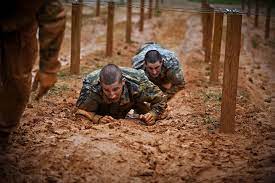Navigating the Complex Landscape of Military Training Under ITAR

The International Traffic in Arms Regulations (ITAR) plays a crucial role in shaping how military training in the defense and aerospace industry unfolds. In this blog post, we’ll explore the intricacies of the military training subset of controlled defense services under ITAR and its impact on the development of skilled personnel in this sector.
Understanding ITAR:
ITAR is a set of United States government regulations that control the export and import of defense-related articles and services on the United States Munitions List (USML). The goal is to safeguard national security by regulating the access to sensitive military technologies. This includes not only physical items but also technical data, software, and training related to defense articles.
Military Training under ITAR:
Export-controlled “defense services” include military training in the ITAR. Military training is defined as “training of foreign units and forces, regular and irregular, including formal or informal instruction of foreign persons in the United States or abroad or by correspondence courses, technical, educational, or information publications and media of all kinds, training aid, orientation, training exercise, and military advice.” Military training, especially in the realm of defense and aerospace, involves the transfer of knowledge, skills, and technology that fall under the ITAR jurisdiction.
Key Components of Military Training under ITAR:
- Classification of Defense Articles: ITAR outlines specific categories of defense articles and services that are subject to control. Training programs need to identify and classify the commodities associated with the training to ensure compliance. That said, regardless of ITAR or EAR jurisdiction of the commodities, if the training being provided is to foreign units or forces, the training activity may be considered a defense service.
- Licenses and Authorizations: Any transfer of ITAR-controlled technical data or defense services requires a license or authorization from the U.S. Department of State. This includes foreign nationals participating in training programs.
- Secure Handling of Technical Data: Military training often involves the dissemination of technical data and know-how. Under ITAR, it’s crucial to ensure that this information is handled securely to prevent unauthorized access or transfer.
- Restricted Access: Training facilities and materials must be restricted to authorized personnel only. This includes implementing stringent access controls and monitoring systems to prevent any potential breaches.
Challenges and Opportunities:
While ITAR compliance adds a layer of complexity to military training, it also presents opportunities for innovation and collaboration. Adhering to these regulations fosters a culture of responsibility, ensuring that defense technologies are shared judiciously and only with trusted partners. Additionally, the demand for ITAR-compliant training programs has led to the development of specialized courses and certifications. This not only enhances the skills of military personnel but also creates a pool of experts well-versed in the nuances of ITAR regulations.
Military training under ITAR is a balancing act between strengthening national security and fostering international collaboration. As technology continues to advance, the importance of robust training programs, coupled with strict adherence to ITAR regulations, becomes even more critical. In the ever-evolving landscape of defense and aerospace, staying informed and compliant is key to shaping a secure and skilled future.
Comments